

© Per Holmbäck
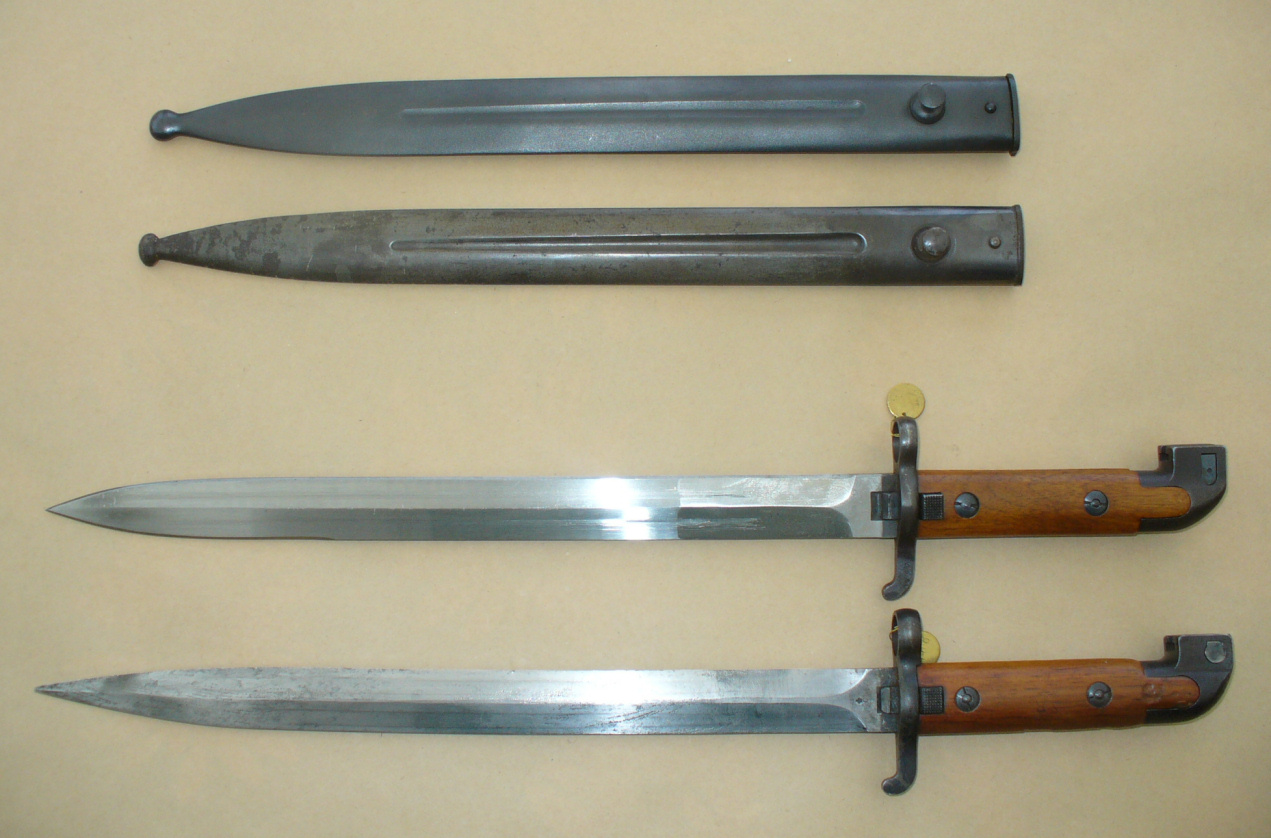
| Model | Tl | Bl | Md | Factory | Quantity |
| fm/1913 | 460 | 330 | 15,5 | Carl Gustaf Stads Gevärsfaktori | 500 |
| m/1914 | 460 | 330 | 15,5 | Carl Gustaf Stads Gevärsfaktori
Eskilstuna Jernmanufactur AB |
unknown |
| navy project model | 630 | 500 | 15,5 | Carl Gustaf Stads Gevärsfaktori | very few |
| m/1915 | 630 | 500 | 15,5 | Carl Gustaf Stads Gevärsfaktori EJAB EAB |
unknown |
| This picture shows the different pommel and locking stud
of the two models
(The Locking stud of the fm/1913 is the same as on socket bayonet m/1867-89.) |
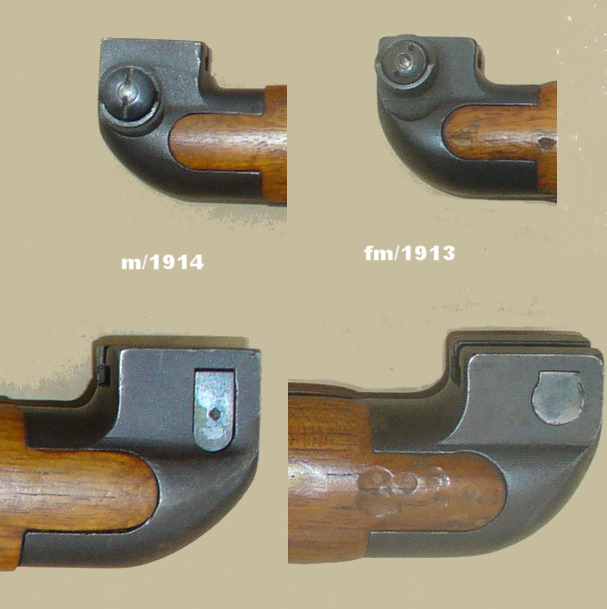 |
| The guard differs in that the muzzle ring is thicker on
m/1913. It must have been more complicated to manufacture.
|
 |
| Project model of the navy carbine bayonet |
 |
| Closeup of the hilt. |
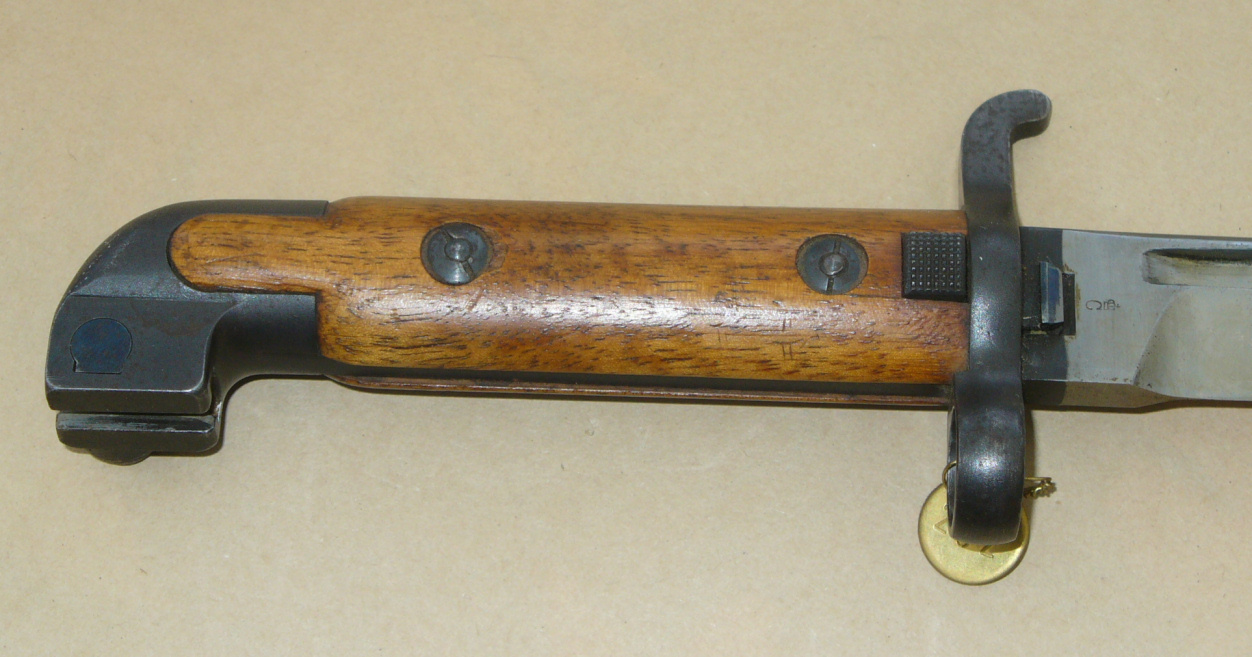 |
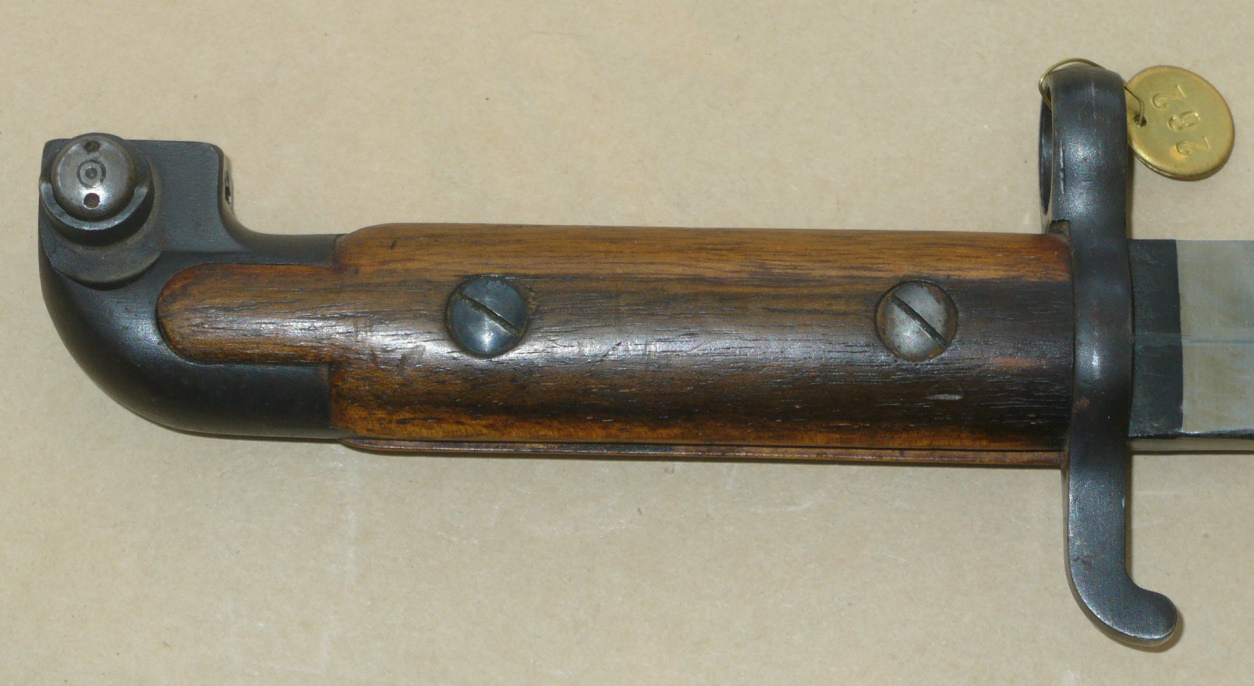 |
| The sub machine gun barrel guard with bayonet mounting, m/1945C. |
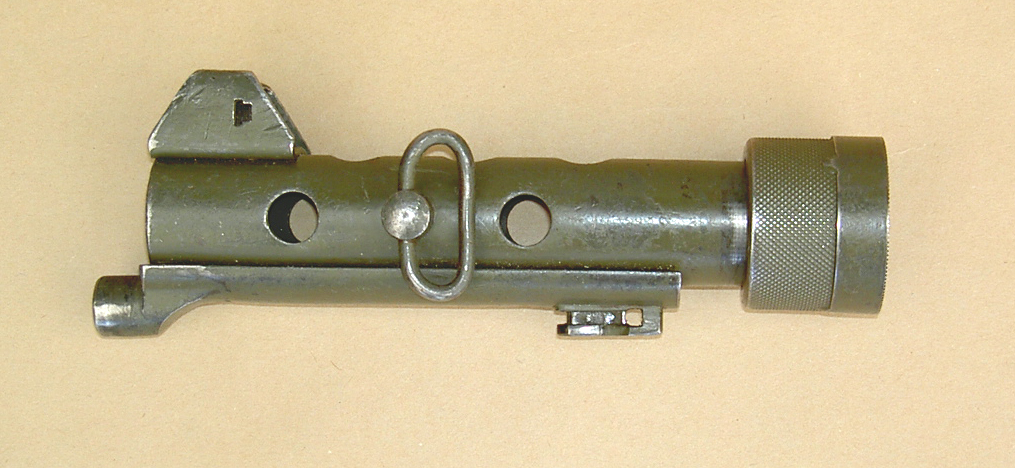 |
 |